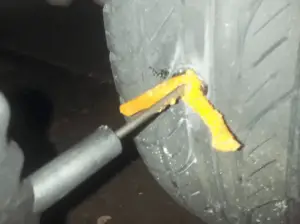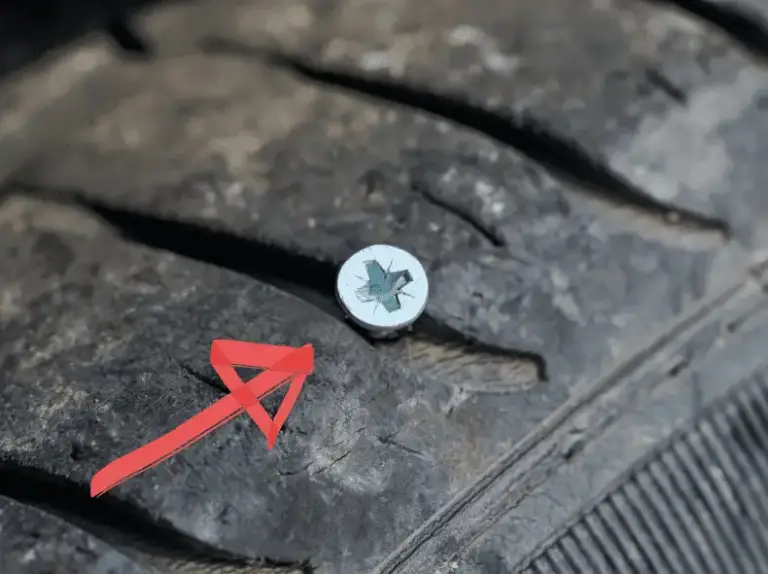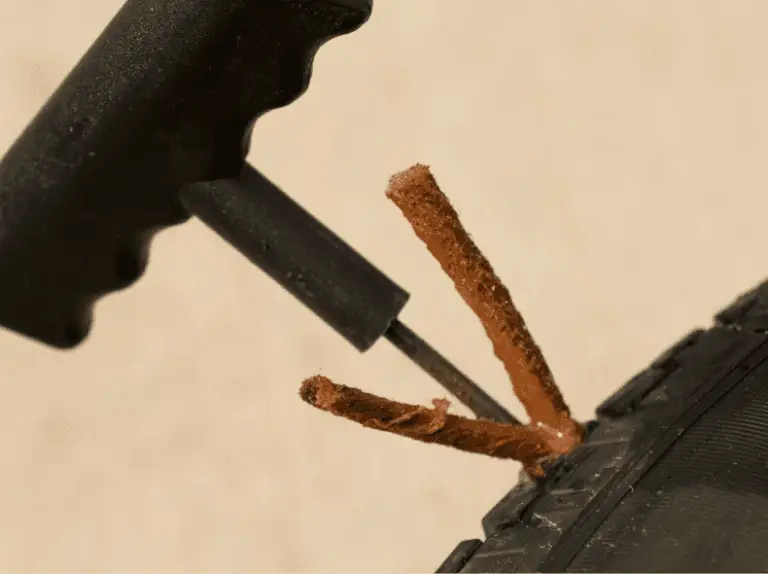Whether you already have a plug kit or are thinking of getting one, it’s always nice to know in advance whether a deflated tire can be plugged.
The simple answer is yes, a deflated tire can be plugged, but it may not be the best option which we will discuss below.
Often when you have identified either a screw in a tire or a hole perhaps left by one that has since fallen out, there may be other problems with the tire that you haven’t yet noticed.
The advantage of having an inflated tire before you plug it is that you can check more easily for other damage on the tire.
Some leaks or potential leaks can easily be seen because the hole is big enough. Sometimes though, smaller leaks may not be visible, and you may have to do additional checks to guarantee there are no other problems with the tire you are looking to plug.
I always like to inflate a tire before plugging it. This allows me to use soapy water and a spray bottle to check for other areas where the tire may be leaking. You’d be surprised by the number of times you have a screw in your tire that you also have other damage that you may not notice.
I always check the other three tires at the same time and, on occasions, have found screws or other sharp objects in those tires too. It’s much better to find this now when you have the plugging kit to hand than to notice a different tire leaking in a week or so and allocate more time and effort.
If you’ve driven over one nail is quite likely that others were in the same area on the road when you drove over it. Tires can be nicked, and very small holes can be created by a nail that bounces off the tire and leaves very little sign of damage but can cause very slow leaks.
A quick spray of soapy water all over the tire, including the bead, will show you if you need to pay attention to any other areas of the tire.
If your tire has no air in it and is deflated, you cannot do this, and you will only find out you have a leak once you’ve inflated the tire after plugging it.
Having a tire inflated for you to plug also makes it easier to ream the hole before plugging it. Although the rubber of a tire needs to be supple to expand and contract slightly, It also needs to be firm enough to support the weight of the car.
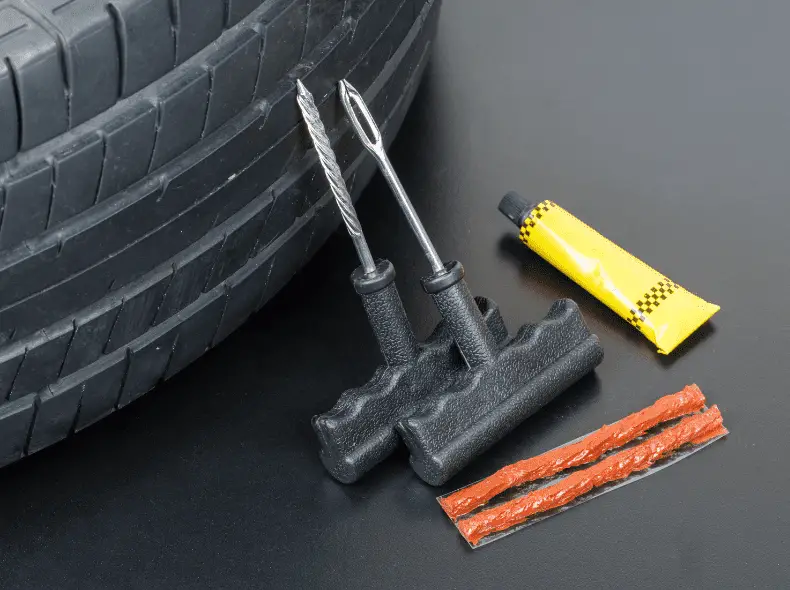
Because of this, getting a reaming tool through the rubber can be quite tough. This can be made more difficult if then is no air pressure pushing back against you pushing on the remaining tool from the outside. You may need to hit the handle with a hammer to force it through. Be careful hitting the handles of plastic plugging reamers. It’s far better to have better quality metal handle kits if you intend to plug flat tires.
A deflated tire will collapse slightly on itself as you try and push the plugging tools into the rubber. This can make for a less clean ream which can result later on in the plugging repair leaking again.
You can still plug a hole if the tire is deflated, but it may take longer, and the reaming process may not produce as good a result as if the tire was inflated with air.
Can I Plug A Tire Without Taking It Off?
Another question people often ask is, do you have to remove the wheel from the car to affect a plug repair? The answer is that if it is a back wheel on the rear axle, you will most certainly have to remove the wheel to do this.
You will not be able to push down firmly enough with the reamer or plug applicator if the wheel is on the back axle.
You have a chance of plugging a front tire without removing it off the axle because you can turn the steering wheel on a full lock, either left or right, and position the hold to be plugged to allow you to apply maximum pressure.
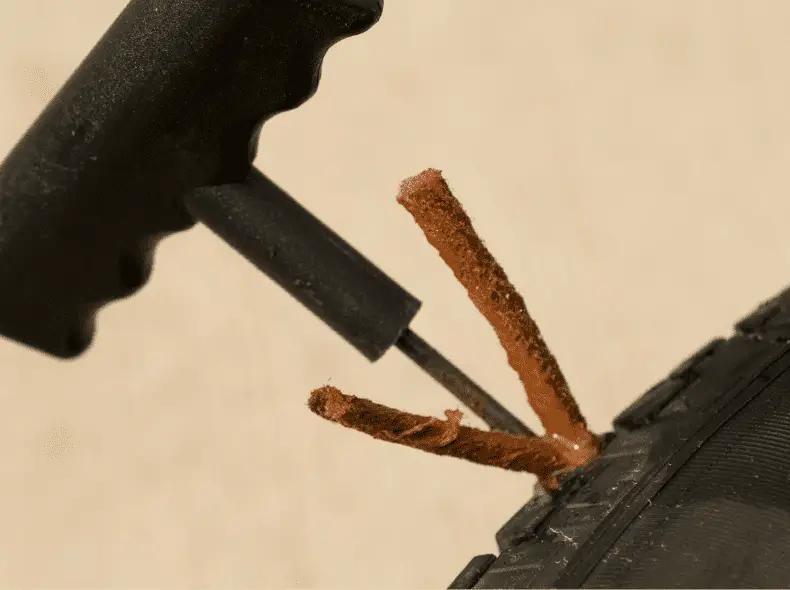
If you leave the wheel on your car, you will have to approach the hole from the side, not above. There is no way you can approach the tire from above because the bodywork prevents you from doing so.
Because of this, you’ll need to tackle it from the side and may need to hit the handle of the reamer and plug applicator tool with a hammer to get it through the rubber.
Some people get confused with plugging and patching. With plugging, there is no need to remove the tire from the wheel or the rims, as you don’t need to get inside the tire to do a plugging repair.
In Conclusion
Inflating a tire before plugging it is the preferred option. You will find it easier to get the applicator tool and the reamer through the rubber. This will usually mean a longer-lasting repair. Having air in the tire will also allow you to check for other holes with soapy water.


![How Long Can A Tire Last With A Screw In It? [Answered] tire-with-screw-in-tread](https://carzaza.com/wp-content/uploads/2023/12/tire-with-screw-in-tread-300x224.png)


![Tire Plug Has A Slow Leak - What To Do? [ANSWERED] tire-being-plugged](https://carzaza.com/wp-content/uploads/2023/12/tire-being-plugged-300x224.png)
![Can You Plug A Tire Twice [Depends On This] newly-plugged-tire](https://carzaza.com/wp-content/uploads/2023/12/newly-plugged-tire-300x224.png)
